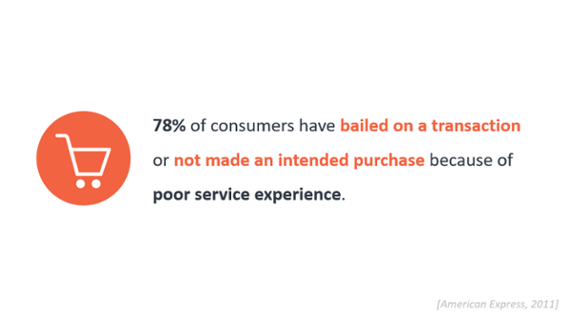Guest post by Catherine DeVrye
‘We better pay attention to the future because that’s where we’ll spend the rest of our lives’ – Arthur C Clarke
Much has changed in the field of customer service since I first wrote a best-selling book titled ‘Good Service is Good Business’. But one thing has not changed. The customer still pays all our salaries.
Am I the only person who gets frustrated with the gap between ‘customer care’ centres and technology? Have you ever wondered if you’ll spend the rest of your life caught in an inescapable voicemail loop? Have you become increasingly frustrated that sometimes it seems near impossible to speak to a living breathing human being on the other end of the phone? So you talk to yourself instead, muttering away while on interminable hold? Do you feel a victim of a ‘death by voicemail’ conspiracy and wonder if the folks designing such systems ever considered the human element?

Now, don’t get me wrong and label me as some troglodyte. As a former IBM executive, I’m a big believer in using technology to improve customer service and there’s no doubt that it has in countless instances! But there is also little doubt that many systems are designed purely in the interest of high tech – completely ignoring the element of high touch, and seemingly oblivious to the fact that most people can actually survive without a particular organisation but no organisation can survive without people.
Therefore, call centres and help desks need to be sure they are staffed with people who recognise this immutable law. They need to be sure that they give those people the proper tools to be able to truly help customers, rather than simply rattle off some standard script. Management needs to ensure that help desks and call centres don’t become ‘hell desks’ and ‘cuss centres’ where staff check their brains at the door before they put on the head sets.
It may be obvious that I’ve recently had a bad experience with a ‘help’ desk. Over an hour on the phone, I was transferred from one person to another, forced to repeat the same story and in the meantime listening to a recorded message about what a ‘valued customer’ I was. When I finally gave up and asked for the name and address of someone I could write to, I was told that it was impossible as they couldn’t provide postal or email contacts! Needless to say I am no longer a ‘valued customer.’

Now, let me share two examples of more effective uses of technology.
Some time ago, in New Zealand, one of the airlines had industrial problems. Although I was booked on another airline that was not affected, I called to confirm my flight. Not surprisingly, I got a recorded message but what did surprise, and impress, me was the fact that it was up to date, something along the lines of…
‘Thank you for calling Air New Zealand. We’re sorry that due to industrial problems with a competitor (gotcha!) we’re a little busier than normal and apologise for this unusually long wait. Please feel free to call back later or if you would prefer to stay on the line, the waiting time will be six minutes.’ I decided to wait and set my stopwatch to see if they met their promise of six minutes. Sure enough, I was pleasantly surprised that within 4 minutes, my call was answered. Even though they were under extra pressure, due to passengers changing flights, they took a few seconds to update their message and set customer expectations at a realistic level. They were still using the technology but to add value, not grey hairs, to the customer on the end of the phone.
When I was speaking at a technology in customer service conference in the US, a pharmaceutical executive presented a case study about how the introduction of voice recognition had resulted in huge reductions in staffing costs. Attendees frantically took notes on how this cost saving technology could be applied to their own organisation. But, they stopped writing in their tracks as the presenter then went on to say why his company abandoned the expensive system…
’When people phone about our pharmaceutical products, they are often sick and want someone on the end of the line who will give them confidence with their medication and offer empathy. So, we replaced the voice recognition with retired nurses to access the information in our database. Although initial staffing costs soared, over a period of 18 months, so did our customer satisfaction levels and profits.’
The executive went on to say that he had an MBA in Information Technology and added to a stunned audience: ‘Never would I have thought that the biggest innovation we’ve had in the last 10 years has been going from machines back to people!’
I have a mug that states: ‘Thanks for calling our customer service department. If you have a complaint, press 1. If you would like an apology press 2. If you would like an excuse press 3. And, if you would like to send a mild electric shock to whoever designed this system, press 4!
I don’t mean to shock or alienate any providers of voice technology or the thousands of dedicated people in call centres and on chat lines who do an excellent job under enormous pressure. I truly believe these functions can be useful. But, don’t be a mug and rush into any technology without first making sure that you understand your customer and plan accordingly to ensure that death by voicemail doesn’t become the death of your organisation.
Develop customer friendly technologies, remembering another quote from Arthur C Clarke, written long before the internet and burgeoning of call centres:
‘Any sufficiently sophisticated technology is indistinguishable from magic.’
 2016 Financial Review Top 100 Australian Women of Influence | Australian Keynote Speaker of the Year | Australian Executive Women of the Year | Best Selling Author of “Good Service is Good Business”, “Paperclips don’t Grow on Trees”, “Hope Happens”, “Hot Lemon & Honey”
2016 Financial Review Top 100 Australian Women of Influence | Australian Keynote Speaker of the Year | Australian Executive Women of the Year | Best Selling Author of “Good Service is Good Business”, “Paperclips don’t Grow on Trees”, “Hope Happens”, “Hot Lemon & Honey”